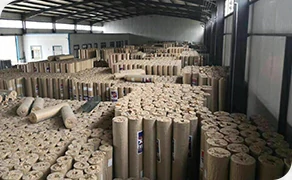 TEL:
+86-13102802206
TEL:
+86-13102802206
 Email:
fencenetting@china.com
Email:
fencenetting@china.com
 Language
Language
 TEL:
+86-13102802206
TEL:
+86-13102802206
 Email:
fencenetting@china.com
Email:
fencenetting@china.com
 Language
Language


The Woven Field Fence A Symbol of History and Connection
Fencing has played a crucial role in the development of agricultural practices and the management of landscapes throughout history. Among the various styles and materials, the woven field fence stands out as a unique and functional structure. This type of fence not only serves as a physical barrier but also represents a deeper connection to the land and the communities that rely on it.
A woven field fence is typically characterized by its intricate design. Constructed using wooden posts and horizontal rails, the fence features a series of vertical slats that are interwoven to create a sturdy and visually appealing structure. The craftsmanship involved in creating a woven field fence requires skill and attention to detail, as each piece must fit together seamlessly to maintain both strength and aesthetic value. This technique not only enhances the durability of the fence but also gives it a rustic charm that blends harmoniously with the natural landscape.
Historically, woven field fences have been employed in various cultures around the world. They can be traced back to ancient civilizations where communities needed to delineate property lines and protect livestock from predators. The design allowed for a flexible and adaptable approach to fencing, which was especially important in regions where terrain varied. Additionally, woven fences provided an effective means to contain animals while allowing light and air to permeate, thus benefiting nearby plants and crops.
In modern times, the allure of woven field fences has experienced a resurgence among homeowners and landowners seeking to merge functionality with aesthetics
. Many people opt for this style of fencing in rural areas or along farmland, where it stands as a tribute to traditional practices while serving practical purposes. It symbolizes a commitment to sustainable living, as the materials used can often be sourced locally, minimizing environmental impact.
Moreover, the woven field fence resonates with the values of community and shared responsibility. In many rural areas, the construction of such fences involves collaboration among neighbors, fostering strong bonds and mutual support. This aspect of community engagement is vital, especially in an era where urbanization often disrupts the ties that connect individuals to each other and to the land.
Aside from its practical applications, the woven field fence has also found its place in the world of art and culture. It has inspired various forms of creative expression, from photography to painting, as artists seek to capture its beauty and the emotions it evokes. The aesthetic appeal of a woven field fence can transform a simple landscape into a picturesque scene, one that tells a story of the land and its caretakers.
In addition to aesthetics and historical significance, woven field fences contribute to biodiversity. Unlike solid fences that can obstruct animal movement and plant growth, a woven design allows for a more permeable barrier, encouraging the passage of small wildlife species. This characteristic can promote a healthy ecosystem, enabling various plants and animals to thrive without disrupting natural habitats.
As we move forward in an increasingly industrial and digital world, the allure of the woven field fence reminds us of the importance of our roots and connections to the environment. It serves as a physical manifestation of the relationship between humanity and nature, showcasing craftsmanship, community values, and ecological balance.
In conclusion, the woven field fence stands as a symbol of history, artistry, and connection. It embodies a legacy that is not solely about protection or separation but rather about nurturing relationships with the land and among people. As we embrace modernity, let us not forget the timeless beauty and significance of such structures; they remind us of where we come from and the paths we continue to weave into the fabric of our lives.